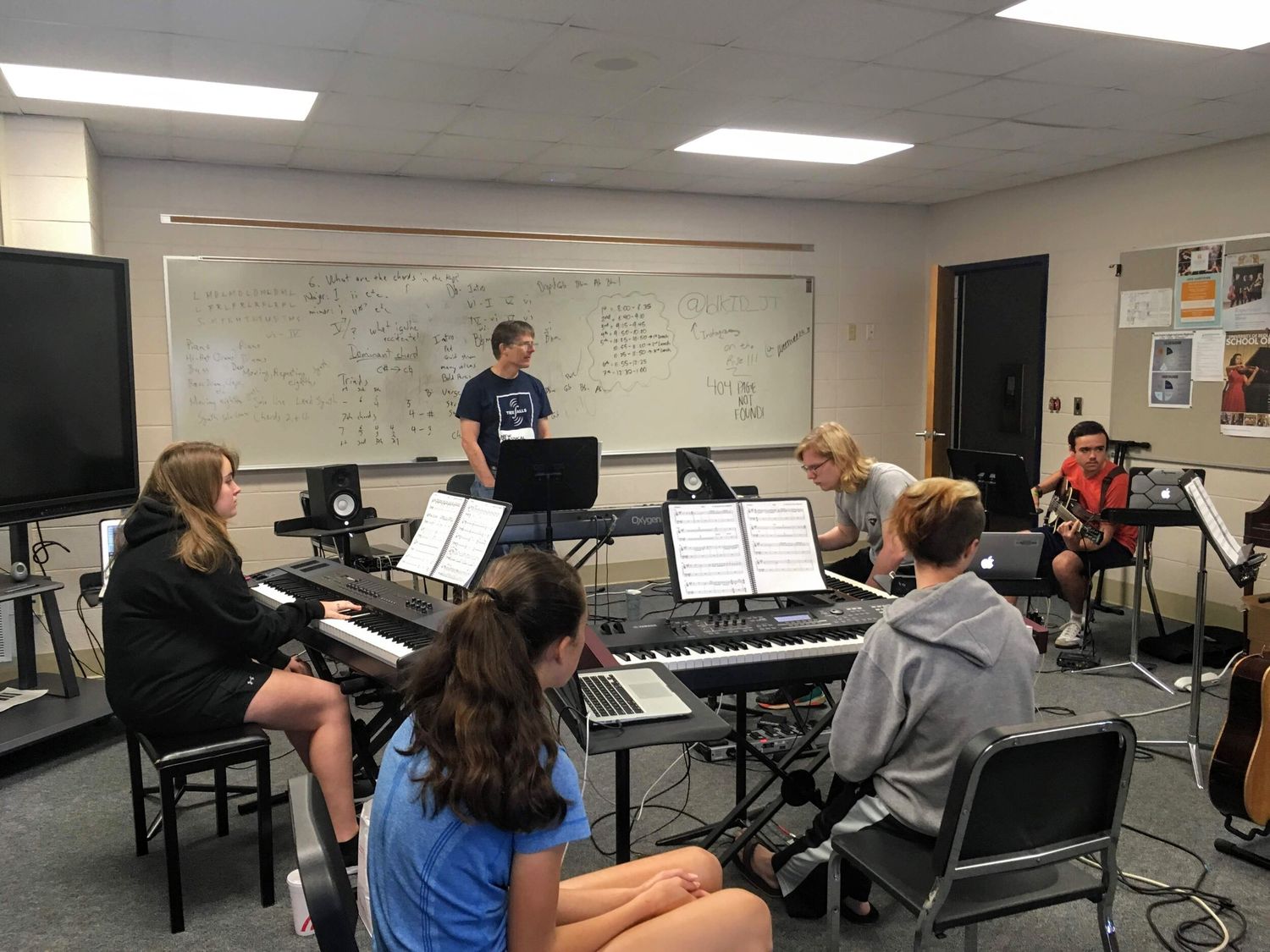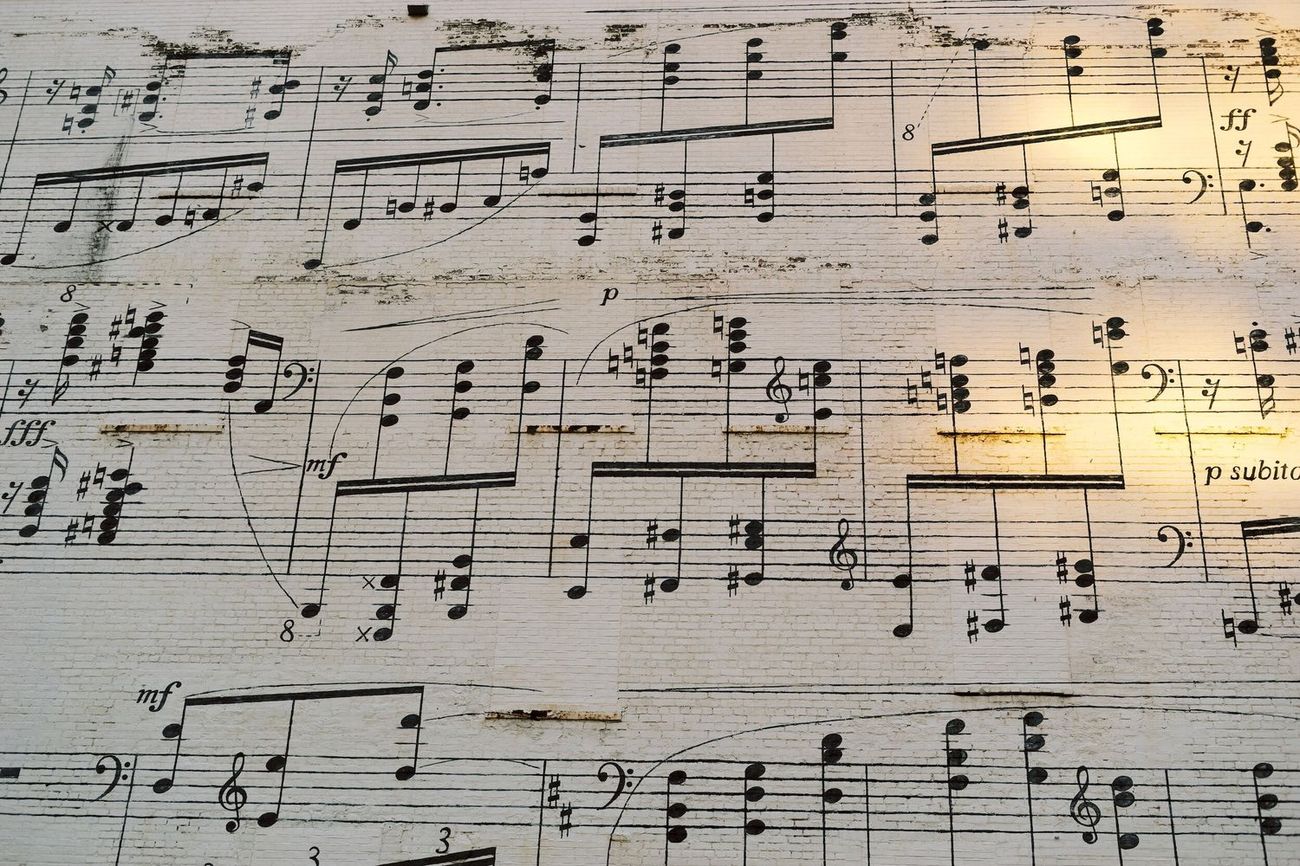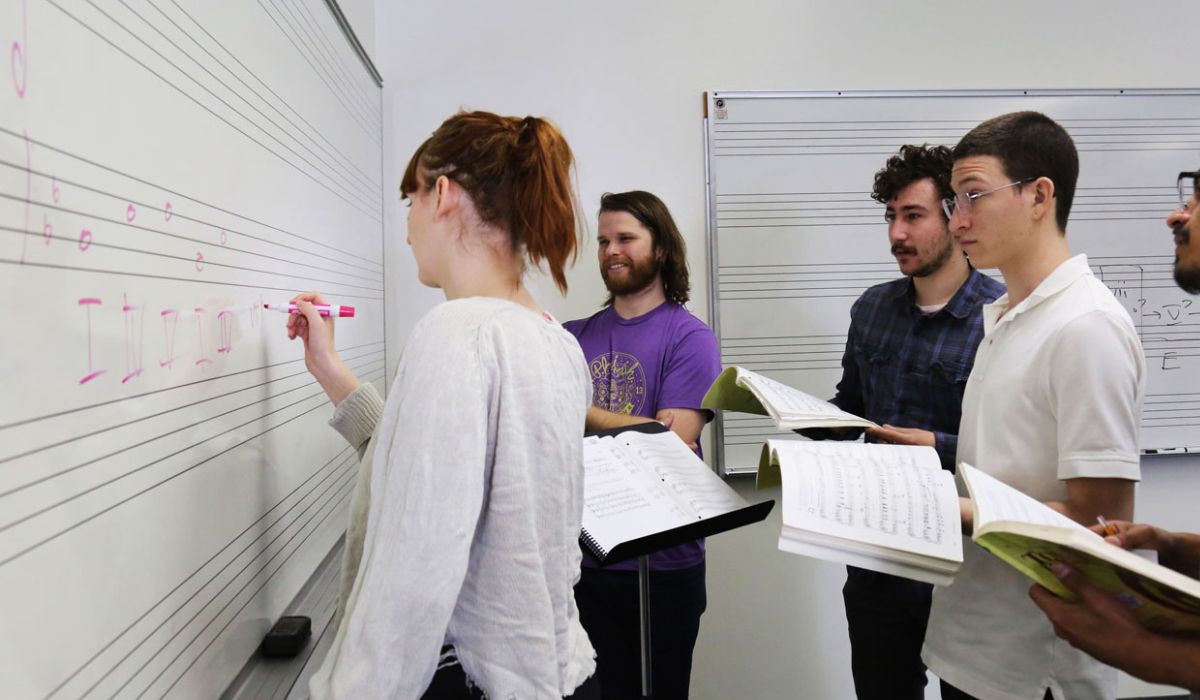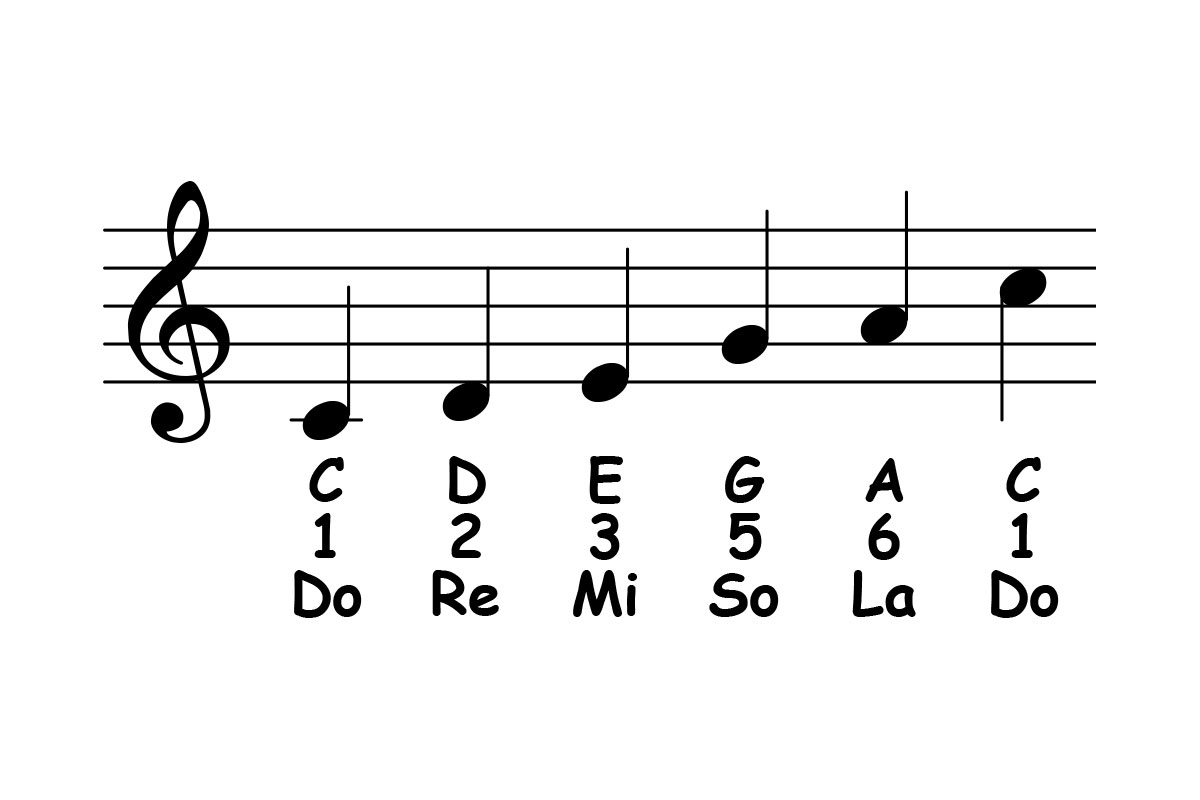Home>Production & Technology>Music Theory>What Is Parallel Major In Ap Music Theory
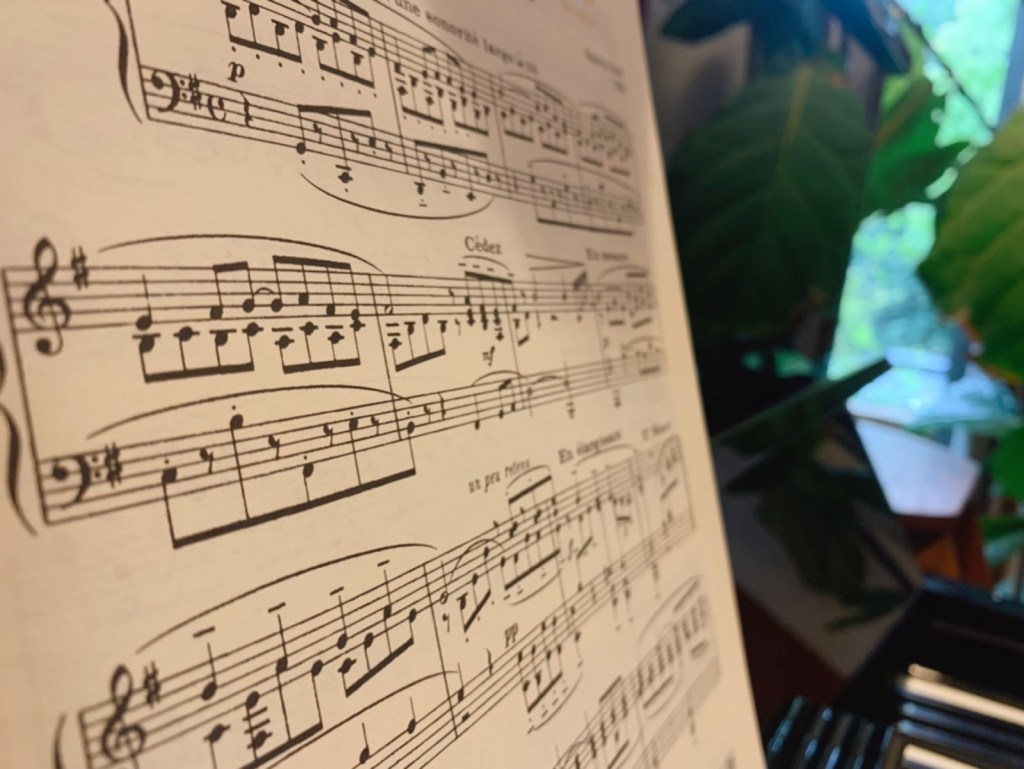

Music Theory
What Is Parallel Major In Ap Music Theory
Published: January 31, 2024
Discover what a parallel major is in AP Music Theory and how it relates to the broader field of music theory. Gain a deeper understanding of this concept and its significance.
(Many of the links in this article redirect to a specific reviewed product. Your purchase of these products through affiliate links helps to generate commission for AudioLover.com, at no extra cost. Learn more)
Table of Contents
Introduction
Music theory is the study of the structure, elements, and principles of music. It provides a framework for understanding how music works, allowing musicians to create and perform with greater depth and nuance. One important concept in music theory is the notion of parallel major.
When we talk about parallel major, we are referring to the relationship between two musical keys that have the same tonic note but differ in quality. For example, the parallel major of C minor would be C major. This relationship between major and minor keys opens up a world of possibilities in composition, harmony, and musical expression.
In this article, we will explore the definition and key characteristics of parallel major, delve into the parallel major scales and chords, discuss the harmonic and melodic elements within parallel major, differentiate parallel major from its counterpart, relative major, and highlight the uses and applications of parallel major in music theory.
Whether you are a musician, composer, or music enthusiast, understanding parallel major can greatly enhance your musical knowledge and abilities. So let’s dive in and explore the fascinating world of parallel major in AP Music Theory.
Definition of Parallel Major
Parallel major refers to the relationship between two musical keys that have the same tonic note but differ in quality. In simpler terms, it is the major key that shares the same starting note as a given minor key.
To illustrate this concept, let’s take the example of C major and C minor. Both keys have the same tonic note, which is C, but they differ in the way they express the mood and character of the music. C major is known for its bright and cheerful sound, while C minor has a more melancholic and introspective quality.
When we say that C major is the parallel major of C minor, we are highlighting the fact that they share the same starting note, but their tonalities and emotional resonance vary. The relationship between parallel major and minor allows composers and musicians to explore different tonal colors and emotions in their compositions.
It is important to note that the term “parallel” is used because these keys are often represented as parallel lines on a musical staff. In sheet music, major keys are typically written with uppercase letters (e.g., C Major), while minor keys are written with lowercase letters (e.g., C minor). This visual representation further emphasizes the parallel nature of major and minor keys.
Understanding the concept of parallel major is essential in analyzing and composing music. It allows musicians to explore the tonal possibilities and emotional range of a particular key, as well as create harmonic and melodic interest by contrasting parallel major and minor relationships.
Now that we have a clear definition of parallel major, let’s delve deeper into its key characteristics and explore how it is used in music theory and composition.
Key Characteristics of Parallel Major
Parallel major keys share some common characteristics that differentiate them from other keys. Understanding these key characteristics is essential in recognizing and analyzing pieces of music written in parallel major.
1. Tonal Quality: Parallel major keys have a bright and uplifting tonal quality compared to their minor counterparts. The major third interval in the key’s structure gives it a more optimistic and vibrant sound.
2. Mood and Emotional Expression: Parallel major keys evoke feelings of happiness, joy, and positivity. They are often associated with pieces that convey a sense of celebration or triumph.
3. Harmonic Stability: Parallel major keys generally have a more stable harmonic structure due to the consonant intervals present within them. This stability allows for the creation of strong and resolved musical phrases.
4. Chord Progressions: Parallel major keys often feature common chord progressions, such as the I-IV-V progression, which enhances the sense of tonal stability and reinforces the key’s overall mood.
5. Melodic Characteristics: Melodies in parallel major keys tend to have a cheerful and uplifting quality. They often consist of stepwise motion, diatonic scales, and occasional leaps to convey a sense of optimism and energy.
6. Modal Mixture: Parallel major keys can incorporate elements of the parallel minor key through the use of modal mixture. This technique allows composers to infuse moments of melancholy or tension within an otherwise major tonality, creating a more dynamic and varied musical experience.
Understanding the key characteristics of parallel major keys enables musicians and composers to make intentional decisions about tonality, mood, chord progressions, and melodic elements in their compositions. By utilizing these characteristics, musicians can create engaging and emotionally resonant musical journeys for their listeners.
Now that we have explored the key characteristics of parallel major, let’s move on to discussing the parallel major scales and chords, which are fundamental building blocks in music theory and composition.
Parallel Major Scales
The parallel major scale is a fundamental component of music theory and provides the foundation for composing and analyzing music in parallel major keys. It is constructed using a specific pattern of whole and half steps, resulting in a unique sequence of pitches.
Let’s take the example of the C major scale, which is the parallel major scale of C minor. The C major scale consists of the pitches C, D, E, F, G, A, and B. The pattern of whole (W) and half (H) steps in the C major scale is W-W-H-W-W-W-H, meaning there is a whole step between each note except for the intervals between E-F and B-C, which are half steps.
Parallel major scales exhibit the same pattern of whole and half steps as their corresponding parallel minor scales. In the case of C major and C minor, both scales follow the pattern W-W-H-W-W-W-H. This relationship allows for easy modulation and harmonic exploration between major and minor keys.
Parallel major scales can be transposed to different starting notes while maintaining the same pattern of whole and half steps. For example, the parallel major scale of A minor would be A major, with the pitches A, B, C#, D, E, F#, and G#.
Understanding parallel major scales is crucial for composers and musicians as these scales serve as the basis for creating melodies, harmonies, and chord progressions within parallel major keys. By familiarizing oneself with the pattern of whole and half steps and practicing scales in different parallel major keys, musicians can develop a deeper understanding of tonality and create more expressive and captivating musical compositions.
Now that we have explored the concept of parallel major scales, let’s move on to discussing the parallel major chords, which are essential building blocks in harmony and chord progressions.
Parallel Major Chords
Parallel major chords are an integral part of music theory and provide the basis for creating harmonies and chord progressions in parallel major keys. Understanding how these chords are constructed and how they function is essential for composers and musicians.
The construction of parallel major chords is based on the parallel major scale. Using the pattern of the major scale, we can build triads, which are three-note chords consisting of a root, a third, and a fifth. For example, in the key of C major, the C major triad consists of the notes C, E, and G. The relationship between the root (C), the major third (E), and the perfect fifth (G) gives the C major chord its characteristic sound and quality.
In parallel major keys, each note of the major scale can serve as the root of a major chord. For example, in the key of C major, the parallel major chords include C major (C-E-G), D major (D-F#-A), E major (E-G#-B), and so on.
Parallel major chords follow a similar functional framework as their relative major counterparts. The tonic chord (I) is often used to establish the tonal center and evoke the overall mood of the parallel major key. The subdominant chord (IV) and dominant chord (V) play important roles in creating harmonic tension and resolution within the key.
Parallel major chords can also be extended beyond triads to include seventh chords and extended chords. These additional notes further enhance the complexity and richness of the harmonies and provide more possibilities for creating varied and expressive chord progressions.
Chord progressions in parallel major keys often incorporate a combination of parallel major chords, borrowed chords from the parallel minor key, and secondary dominants to add harmonic interest and color. These progressions can further convey the desired mood and emotion of the music.
By understanding parallel major chords, composers and musicians can create harmonically rich and compelling compositions within parallel major keys. They can experiment with different chord progressions, inversions, and voicings to create unique and captivating musical experiences.
Now that we have explored parallel major chords, let’s move on to discussing the harmonic and melodic elements within parallel major keys.
Harmonic and Melodic Elements in Parallel Major
Parallel major keys offer a wealth of harmonic and melodic possibilities that can be explored and utilized in music composition. Understanding the unique characteristics of these elements is crucial in creating harmonically rich and melodically captivating pieces.
In terms of harmonic elements, parallel major keys allow for the exploration of different chord progressions and harmonic relationships. The major tonality of parallel major keys provides a sense of stability and resolution, allowing composers to create harmonies that evoke feelings of happiness, brightness, and positivity.
Harmonic elements in parallel major keys often involve the use of diatonic chords, which are chords built from the notes of the parallel major scale. These diatonic chords provide a harmonic foundation and serve as a starting point for creating chord progressions.
Furthermore, composers can incorporate borrowed chords from the parallel minor key to add depth and complexity to their compositions. By borrowing chords from the parallel minor, composers can introduce moments of tension and melancholy within an overall major tonality, creating a contrast that adds emotional depth to the music.
Parallel major keys also offer opportunities for melodic exploration. Melodies written in parallel major keys tend to have a cheerful and uplifting quality. Composers can make use of stepwise motion, diatonic scales, and occasional leaps to create melodic lines that convey a sense of optimism and energy.
Additionally, composers can employ melodic techniques such as sequences, motifs, and variations to develop melodic themes within parallel major keys. These techniques help to create cohesion and interest throughout the music, adding layers of complexity and nuance to the melodic lines.
Exploring the harmonic and melodic elements in parallel major keys allows composers and musicians to create music that is both harmonically satisfying and melodically engaging. By understanding the unique characteristics of these elements, composers can make intentional choices that enhance the overall emotional impact and musical expression of their compositions.
Now that we have covered the harmonic and melodic elements within parallel major keys, let’s move on to discussing the comparison between parallel major and its counterpart, relative major.
Parallel Major vs. Relative Major
The concepts of parallel major and relative major are closely related, but they represent different relationships between major and minor keys. Understanding the distinction between these two concepts is vital in music theory and composition.
Parallel major refers to the major key that has the same tonic note as a given minor key. For example, C major is the parallel major of C minor. The parallel major and minor keys share the same tonic note but differ in their tonal qualities and emotional expressions. Parallel major keys are often associated with brightness and optimism, whereas parallel minor keys have a more melancholic and introspective character.
In contrast, relative major refers to the major key that shares the same key signature as a given minor key. For example, A minor is the relative minor of C major. The relative major and minor keys share the same key signature, meaning they have the same pitches, but they start and resolve on different tonic notes. Relative major keys are often associated with stability and tonic resolution, whereas relative minor keys can add moments of tension and contrast.
The difference between parallel major and relative major lies in their tonal centers and emotional expressions. Parallel major keys offer a direct contrast to their parallel minor counterparts, allowing for exploration of different tonal colors and emotional qualities. On the other hand, relative major keys offer a sense of stability and familiarity as they share the same key signature, allowing for smooth modulations and harmonic relationships.
Both parallel major and relative major relationships are important in music theory and composition. Understanding the distinctions between them allows composers and musicians to make informed choices when creating harmonies, chord progressions, and melodic lines.
By recognizing the unique characteristics of parallel major and relative major keys, composers can effectively communicate different moods and emotions within their compositions. They can use parallel major to create bright and uplifting passages, or utilize relative major to establish stability and resolution in their harmonic progressions.
Now that we have discussed the difference between parallel major and relative major, let’s explore the uses and applications of parallel major in music theory and composition.
Uses and Applications of Parallel Major in Music Theory
Parallel major has a wide range of uses and applications in music theory and composition. Understanding the capabilities and possibilities of parallel major allows composers and musicians to create harmonically rich and emotionally diverse musical pieces. Here are some key uses and applications:
1. Harmonic Exploration: Parallel major provides an avenue for composers to explore different tonal qualities and emotional expressions within a given key. By contrasting parallel major and minor keys, composers can create harmonic tension and resolution, adding depth and complexity to their compositions. This harmonic exploration can create a sense of contrast and drama in the music.
2. Tonal Variation: By utilizing parallel major keys, composers can introduce tonal variation within a piece. Switching between the parallel major and minor keys can evoke contrasting emotions and create musical interest. This tonal variation can add dynamic qualities and captivate the listener’s attention.
3. Modulation and Key Changes: Parallel major provides a smooth and natural transition for modulating or changing keys. Composers can seamlessly transition between parallel major and minor keys to modulate to related keys or introduce new tonalities. This versatility allows for the creation of complex and evolving musical structures.
4. Chord Progressions and Harmonic Sequences: Parallel major keys can be used to create interesting and creative chord progressions and harmonic sequences. By incorporating chords from both the major and minor tonalities, composers can create unconventional and unique progressions that evoke a range of emotions and musical flavors. This adds depth and complexity to the harmonic structure of a composition.
5. Musical Contrast: Parallel major allows composers to create contrast and variety within a composition. By switching between parallel major and minor keys, composers can create shifts in mood, energy, and emotional expression. This contrast adds interest and engages the listener, making the musical journey more captivating and engaging.
6. Expressive Melodies: Melodies written in parallel major keys can be vibrant, uplifting, and full of energy. Composers can utilize the bright tonality of parallel major to create catchy and memorable melodic lines that leave a lasting impression on the listener. These melodies can evoke a sense of joy, celebration, or triumph.
Using parallel major effectively requires a deep understanding of tonal relationships and music theory principles. By harnessing the power of parallel major, composers can create compositions that are rich in emotion, harmonically diverse, and musically engaging.
Now that we have explored the uses and applications of parallel major in music theory, let’s conclude our exploration of this concept.
Conclusion
Parallel major is a remarkable concept in music theory that opens up a world of possibilities for composers and musicians. It is the relationship between major and minor keys that share the same tonic note, allowing for an exploration of contrasting tonal qualities, moods, and emotions. Understanding parallel major provides a deeper understanding of music theory and enhances one’s ability to create compelling compositions.
In this article, we have explored the definition of parallel major and its key characteristics, including tonal quality, mood, harmonic stability, chord progressions, and melodic characteristics. We have also discussed the significance of parallel major scales, chords, and the harmonic and melodic elements within parallel major keys.
Furthermore, we have compared parallel major to its counterpart, relative major, in terms of tonal centers and emotional expressions. We have seen how parallel major and relative major relationships offer distinctive approaches to creating harmonies, chord progressions, and melodies.
We have also discussed the practical uses and applications of parallel major in music theory. From harmonically exploring different tonal qualities, tonal variation, and modulation to creating dynamic chord progressions, fostering musical contrast, and crafting expressively vibrant melodies, parallel major plays a vital role in musical composition.
By incorporating parallel major into compositions, composers can create harmonically rich and melodically captivating music that engages and captivates listeners. It allows for the expression of a wide range of emotions and the creation of unique tonal landscapes.
Understanding parallel major not only enhances our comprehension of music theory, but it also offers a valuable tool for creating music that resonates with audiences. Whether you are a musician, composer, or simply an avid music enthusiast, the knowledge of parallel major will deepen your appreciation and understanding of the rich tapestry of musical expression.
In conclusion, parallel major is a fascinating and essential concept in music theory. Its power lies in its ability to harmonically and melodically shape the emotional narrative of a composition. By harnessing the characteristics and applications of parallel major, musicians can create captivating and expressive musical experiences that touch the hearts and minds of listeners.



